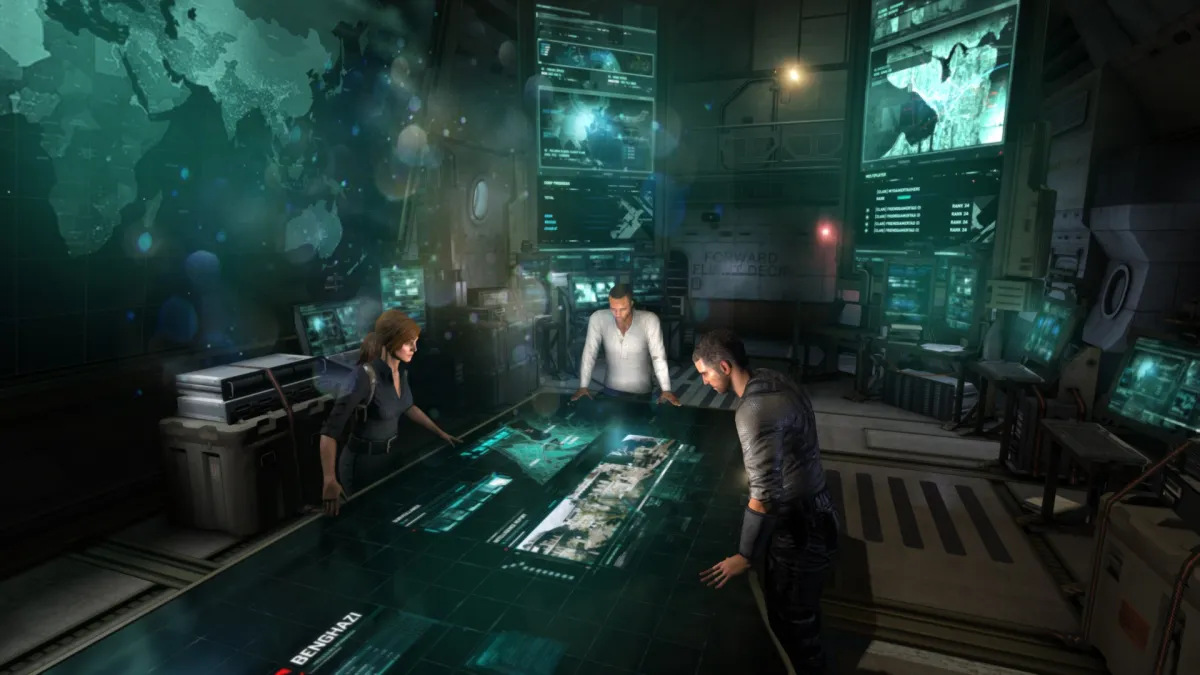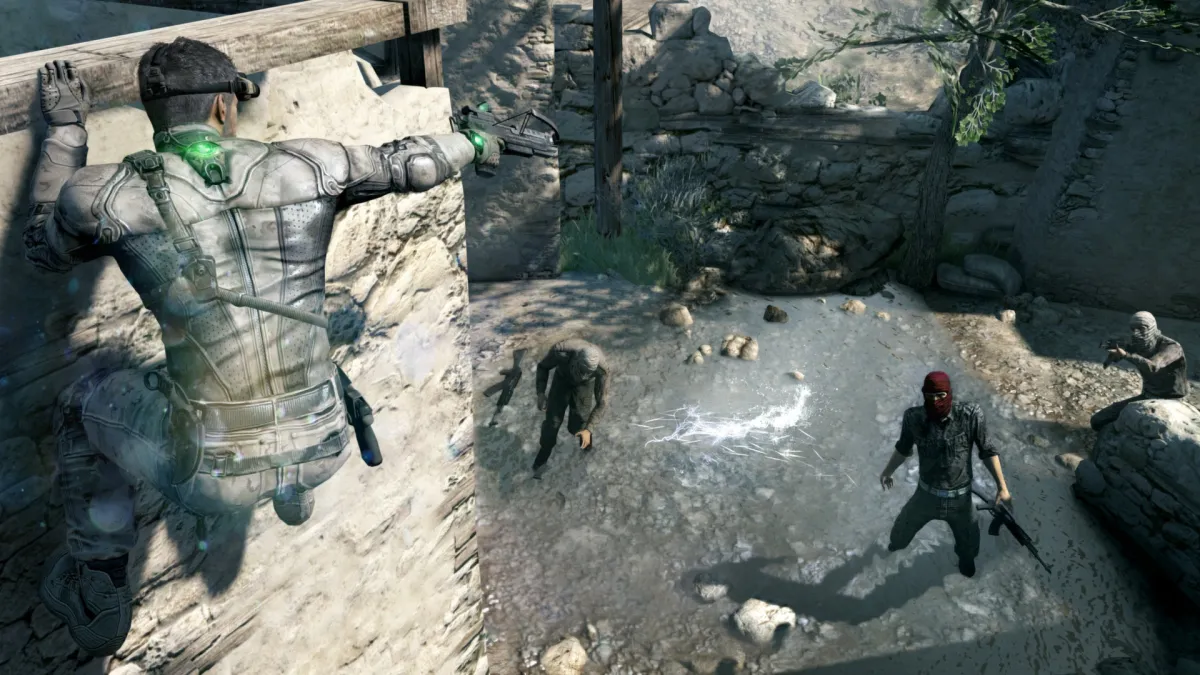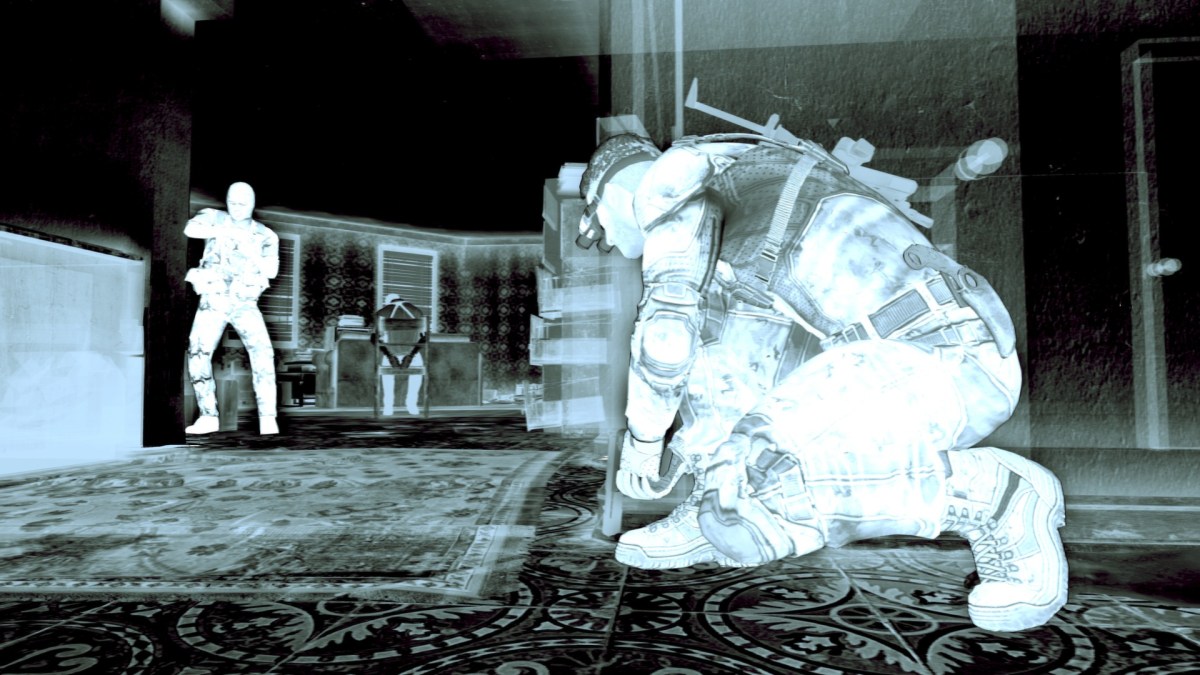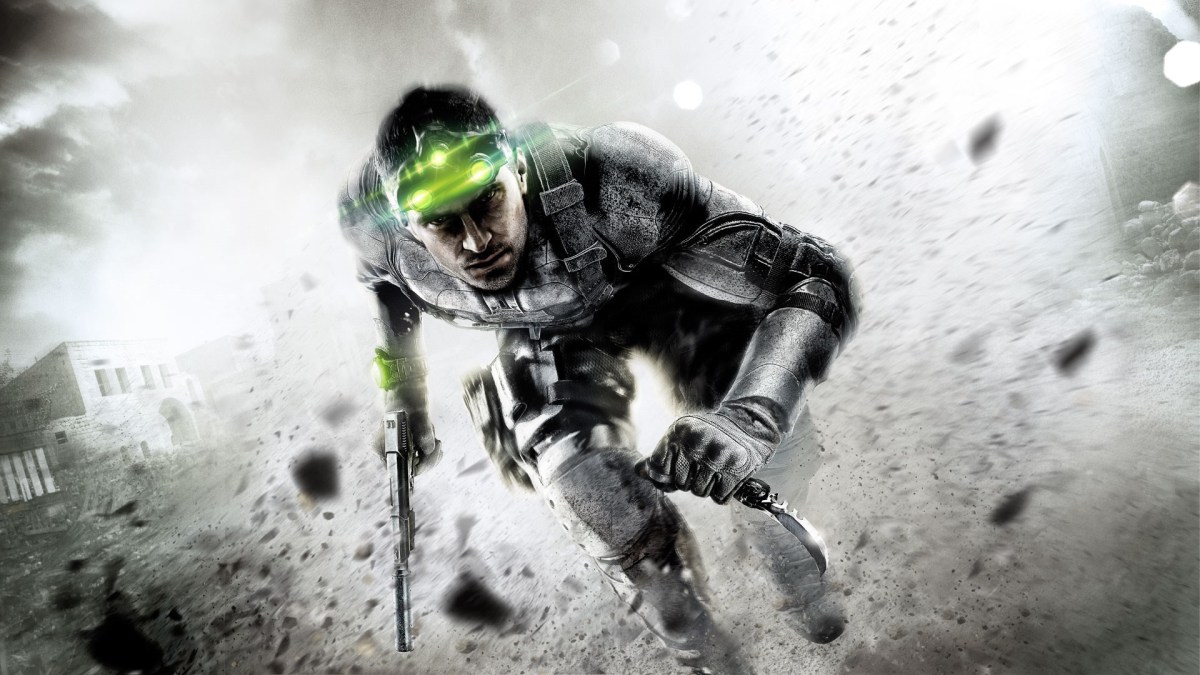The PS4 and Xbox One landed a week apart in November 2013, signaling the arrival of the 8th generation of console gaming. Well, technically, the 8th gen started in 2012 with the Wii U, but that’s like saying the modern superhero movie era started with Ben Affleck’s Daredevil.
Video games were officially Big Business, meaning bigger budgets and sales expectations. Since the best-selling games of 2012 included two Call of Duty games, the trend was clear: Gamers want fast-moving games with big guns. Publishers scrambled to keep up with the modern military shooter juggernaut, leading to the COD-ification of beloved franchises like Halo and BioShock.
Splinter Cell was forged in the great creative fire of the original Xbox lineup, when Microsoft was hurling money at studios to make itself a viable competitor to the PS2. One of these studios was Ubisoft Montreal. It’s weird to think about now, but at the time, Ubisoft was a small European publisher who had one modestly successful franchise, Rayman, and a few satellite studios, including respected PC game developer Red Storm Entertainment. Red Storm was formed by your Grandpa’s favorite writer, Tom Clancy, to make video games based on his massively popular military fetishist techno-thriller novels.
Red Storm built a reputation for games as accurate to real military life as Clancy’s novels, like the Rainbow Six and Ghost Recon series. Both those games started as slow-moving, tactical shooters and have mutated into, respectively, an online-only hero shooter and a take on Grand Theft Auto, but hey, at least they started with good intentions.
Remember that because we’re gonna come back to it.

Ubisoft Montreal developed Tom Clancy’s Splinter Cell as a direct counter to the PS2’s Metal Gear Solid 2. It was a breath of fresh air for people irritated by that series’s ridiculous anime excess and meta-commentary, with tense, deliberate stealth gameplay based on light and shadow inspired by Thief. Splinter Cell checks many Tom Clancy boxes: a ripped-from-the-headlines plot about a coup in Georgia (the country, not the Ray Charles song), believable near-future tech, and grizzled-but-noble career military guys.
Your king grizzled military guy is Sam Fisher, voiced with an intoxicating blend of menace, cynicism, and world-weariness by cult movie icon Micheal Ironside. People loved Splinter Cell‘s gameplay and tech at the time, but Ironside’s performance stole the show. The humanity he brings to the character would peak in the third game, 2005’s Chaos Theory, along with everything else. The series would struggle to recapture the magic of Chaos Theory for the rest of its existence.
Thanks to the success of the Far Cry and Assassin’s Creed series, both of which incorporated elements of Splinter Cell‘s stealth gameplay, Ubisoft exploded into the medium-defining, international juggernaut it is now. After Chaos Theory perfected government superspy stealth, Splinter Cell descended into a two-game-long identity crisis. Double Agent was split into two completely different games, with much press and marketing devoted to the Xbox 360 version of the title, which was riddled with bugs and poor design. The original Xbox version of Double Agent was developed by the same team as Chaos Theory and is superior in every way, except no one played it.
Both versions of Double Agent made a cardinal sin familiar in long-running franchises: it puts way too much emphasis on its legacy characters. In the prior games, the player is given little hints of Sam’s personal life and backstory through mid-mission chatter, but the focus is always on the job. Double Agent makes Sam himself integral to the plot and flattens him down into an angry asshole with none of the nuance and humor that was so endearing to him in the first place. He goes from being a mercurial agent moving through the shadows of a complicated world, offering quips about dating in his 50s to lighten the grim reality of his job, to a muscled meathead in an Underarmor shirt growling, “They. Killed. My. DAUGHTERRRRR” to anyone in earshot.
Splinter Cell: Conviction wades even deeper into the plot swamp, though I’ll give the team points for trying something different. Conviction is clearly inspired by the action and “man on the run” storytelling of the Bourne movies. It introduces the innovative “mark and execute” system, where you can tag a handful of enemies to eliminate with one button press. I think Conviction is a pretty fun action game, but it’s on the other side of the planet, design-wise, from Chaos Theory.
So we finally come to Blacklist, which both rebooted and (almost) killed Splinter Cell.

Splinter Cell: Blacklist is so damn weird. It feels like a “requel,” a term coined by Scream 5 to encapsulate movies like The Force Awakens and, well, Scream 5, which are new installments in long-running franchises that seek to forge new territory while honoring established tropes and characters. Not quite a sequel, not quite a reboot, a requel. On paper, Blacklist is a return to form for the series: you play Sam Fisher, a member of a super-secret government organization who travels the world infiltrating military compounds through stealth to spy on, secure, and silence threats to the United States.
The game features light-based stealth and characters who go down in only a few shots, Sam included. It also incorporates a few of the better ideas from the later games, like the ghostly “last known position” silhouette that appears when Sam breaks his pursuers’ line of sight and the mark-and-execute system. Sam is fast, athletic, and deadly. You can tear through groups of enemies in melee range. Not bad for a guy in his mid-fifties.
And there’s the biggest problem. Micheal Ironside wasn’t available for Blacklist due to a cancer diagnosis, and he’s replaced by Eric Johnson, who is thirty years younger than Ironside and sounds it. Blacklist had a tremendous opportunity to sideline Fisher as a character, to make him the guy in the chair, perhaps after a near-death incident or mistake in the field reveals that he’s is too old to be doing wet work, something the series has been commenting on since the original game.
It’s part of a more significant issue of big corporate-owned storytellers putting too much weight on their main characters, and by “characters,” I mean iconography. I love Sam Fisher, but not because of the color green or his stupid three-eyed goggles. From Splinter Cell through Chaos Theory, Fisher built up in the margins as a character we enjoyed spending time with. As the franchise evolved to chase trends, with the Xbox 360 version of Double Agent and Conviction, Fisher’s character, already thin by design, was stretched too far. He snapped, and everything we liked about him was lost, except for his visual iconography and the broad strokes of his bio.
Ubisoft could have created a new character as interesting as Sam, but instead they go the easy way out: they cover a character called “Sam Fisher” in recognizable gear and backstory to avoid having to actually write anything interesting. You could argue that Sam’s flat characterization is because he’s broken following the events of Double Agent and Conviction, but that’s only interesting if you do something with it, and they don’t. Sam is a miserable jerk at the beginning of Blacklist, and he’s a miserable jerk at the end of it.

The lack of personality carries over to the plot, techno-thriller nonsense about a series of terrorist attacks on the US. It drops just enough ripped-from-the-headlines buzzwords to keep things moving without saying anything interesting other than “America is bad but also good sometimes.” The one bright spot in the acting company is Adam Jensen himself, Elias Toufexis, who brings some fun to the story as the arms dealer who kidnapped Sam’s daughter and faked her death for the CIA in Double Agent. I told you this game is weird.
Despite all the corporate meddling and storytelling failures, the actual gameplay in Blacklist is really fun. It’s way too easy, especially for veterans of the series, but part of that is down to a three-tiered scoring system that grades players on one of three playstyles: Ghost (extreme stealth), Panther (stealthy but deadly), and Assault (guns blazing.) Instead of penalizing you for breaking stealth, the game rewards you no matter how you play. It leads to a more dynamic experience than the “save game, get spotted, load save” pattern of earlier stealth games, which even I admit can be tedious.
There is a “perfectionist” difficulty for series purists, which eliminates many action-oriented features, but the movement in Blacklist is too fluid for the precision required by a proper stealth game. It feels nothing like Chaos Theory and is another example of the game’s identity crisis.
Blacklist arrived to a pretty solid “meh” on release. It reviewed okay and sold 2 million units, which is decent but not even close to Assassin’s Creed and Far Cry numbers. Many fans rejected it outright due to Ironside’s absence, but some respected the attempt to return to a purer stealth experience. Browsing Reddit and review comments, the kindest words given are by those introduced to the series through Blacklist. They are quickly steered towards Chaos Theory by older fans.
Following Blacklist, Ubisoft put the series for a few years, but Sam popped up a few times in the other surviving Tom Clancy games. He appears in both Ghost Recon Wildlands and Breakpoint, again voiced by Ironside. He is also a playable operator in Rainbow Six Siege, a fact I did not know until right this second, and if you’d like to be reminded how much Ubisoft has stripped away the authenticity of the Tom Clancy brand in the 20 years since the original Splinter Cell, go ahead and read his bio here.
The internet’s reaction to these cameos, ridiculous though they may be, led Ubisoft to begin development on a remake of the original Splinter Cell, which we know next to nothing about, except that, according to Ubisoft, it “will draw from the rich canvas of the brand” and even copying and pasting that made me feel sick. Why are they remaking the original Splinter Cell and not its vastly superior third installment, Chaos Theory, a game I have now mentioned nine times in this retrospective of an entirely different game? Who knows. I’m sure it has nothing to do with all the other high-profile and well-received remakes that have come out in the last five years. Ubisoft? Chase trends? Getouttahere.






Published: Aug 21, 2023 09:00 am